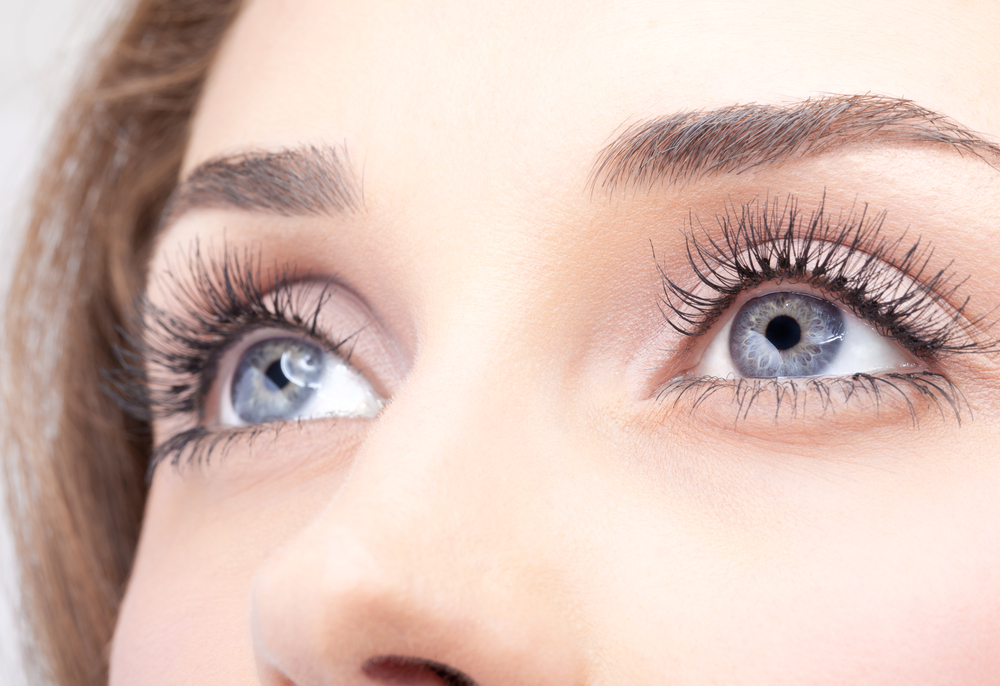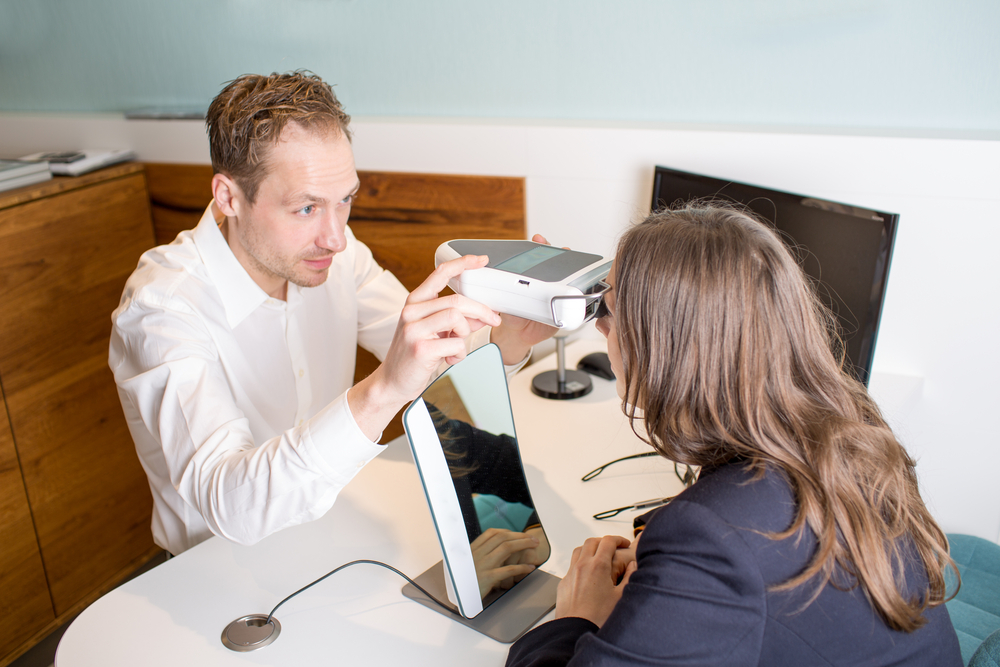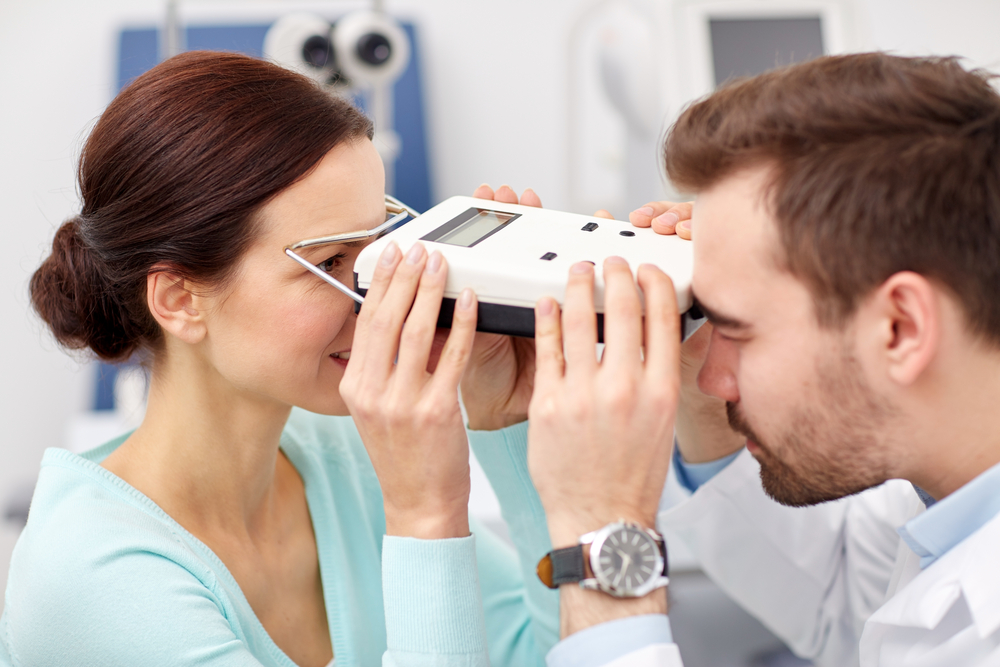They say the eyes are the window of the soul, and that’s never been truer than when you’re at the optometrist.
Our eyes are unique, whether that’s the color, the shape, or even the DNA that makes up our eyes.
One of the most unique things about our eyes is also the pupillary distance between them.
This pupillary distance is crucial for optometrists that want to prescribe the best pair of glasses and sunglasses for their patients.
For women, the average pupillary distance is around 62 mm. This is the distance between both pupils in the eyes, measured straight across the face.
It is also known as singular pupillary distance. For men, the distance is roughly the same, around 64 mm measured straight across from pupil to pupil.
Table of Contents
What is Pupillary Distance?

Pupillary distance is the distance between the center of both of your pupils when looking straight ahead.
When your pupils, which are the black part of your eye that reacts to light, are at the center of your field of vision looking forward, then the distance between them both at this point would be your pupillary distance.
Keep in mind this is a small unit measured in mm, so accuracy is key for the pupillary distance to have any value.
There are two types of pupillary distance measurements, including:
- Singular pupillary distance, which measures the center of one pupil to the center of the other in a straight complete line. The unit of measurement for a single PD will be a whole number, such as 65mm or 63mm.
- Dual pupillary distance is much more common, which measures the center of one pupil to the bridge of the nose and then adds those two numbers together. You might see a dual PD measurement resemble a fraction. However, it is simply giving you the measurement of your pupillary distance for each eye. For instance, if the center of one pupil on the right side of your face to the bridge of the nose is 32mm, and the other side of your nose is 35mm, then the total will be 65mm and the measurement will show 32/35.
You might be wondering why even bother using dual pupillary distance if you have to add the numbers anyway.
The truth is that some people will be able to wear certain glasses if they have symmetrical PD, while others will not.
In addition, dual pupillary distance is a great way to measure pupillary distance in people that don’t have symmetrical faces (which is most of the population).
Just take a look at your face in the mirror from a distance.
You can see that most of us will have some sort of symmetrical differences, whether that’s the shape of the face or the shape of the eye.
These differences can prove to be a barrier to getting a good, fitted pair of eyeglasses.
What Is the Purpose of Pupillary Distance?

Pupillary distance is mostly used by optometrists who want to use that measurement to help pair people with a new set of eyeglasses.
Unlike contact lenses, which can be freely inserted into each eyeball, eyeglasses will need to sit comfortably across the face and on the bridge of the nose.
These eyeglasses will help refocus light into the retina, therefore improving your ability to see images more clearly, crisper, and better than ever before.
However, when wearing eyeglasses, it’s important to note that not every part of the lens produces the same images.
If you already wear eyeglasses, a simple experiment to prove this is to shift your eyeglasses just to the left or right of where they normally sit, or even up or down.
Any small movement completely takes away the glasses’ ability to produce a good image, and just goes to show how important it is to have your eyeglasses lined up to your face.
Without pupillary distance, it would be difficult to choose the best set of eyeglasses to help you see clearly.
It would also be difficult to take a measure of your eye health for the upcoming years.
For instance, if you have esophoria, meaning your eyeballs drift inward, or exophoria, meaning your eyes drift outward, then having a good PD is critical so your optometrist can reference it when measuring any changes in your eyes.
How to Measure Your Own Pupillary Distance

The best way to get access to your pupillary distance is to contact a professional optometrist.
Your optometrist or an optician (meaning someone who helps you choose the best pair of eyeglasses for you), will take a measurement of your pupillary distance during your annual eye exam.
It’s best to contact an optometrist to get an eye exam done at least once a year if you have a pre-existing eye condition.
It’s also best to schedule annual exams if you’re older past the age of 40.
Not only will you be able to get your PD measured during this exam, but you’ll also be able to get an overall status update on your eye health.
If you cannot attend an optometrist for whatever reason, another way to measure your pupillary distance is to partner up with friends and have them measure your pupillary distance.
- To do so, print out a paper pupillary distance ruler with mm numbers on it.
- Cut a hole in the middle of the paper ruler, so it can be well rested on the bridge of your nose.
- Line up the measurement lines to the very center of the pupils and measure across. If it’s too difficult for your friends to determine where the center of the pupil is, they can also align the ruler using the very left side of the iris or the very right side of the iris.
- Have your friend mark where the center or very left or right of the pupil is on the ruler, and then take the sum or use these as dual measurements.
You can also get an older pair of glasses and put them on your face.
Look at a mirror straight ahead and get a semi-permanent marker to mark the center of your pupils on your glasses.
This is one of the easiest, yet most effective ways for getting your pupillary distance.
Is It Hard to Get Your PD?

You’d think that your optometrist would be willing to give you any type of prescription necessary to help improve your overall quality of life.
Unfortunately, this is not the case for many states in the country, where giving out a pupillary distance number could get you in big trouble.
This is a shame, since having your pupillary distance number handy can allow you to shop for cheaper glasses online that are way cheaper than those sold in regular optical stores.
If you’re able to get a PD, save it and use it to shop online since many online retailers will want your PD before they make your glasses.
Some brands might also design glasses to fit someone with a PD of 55m or 60 mm, the possibilities are endless.
Nevertheless, if you’re struggling with getting your PD back from your optometrist, simply follow our steps above to get a PD for you.
Final Thoughts
Pupillary distance might seem almost unnecessary, but it plays a big role in allowing people to get the right pair of glasses to help them see clearly.
This is why it is important to visit your optometrist and make sure that you are getting an accurate reading.




